Edit: 1 minute of silence for cycling
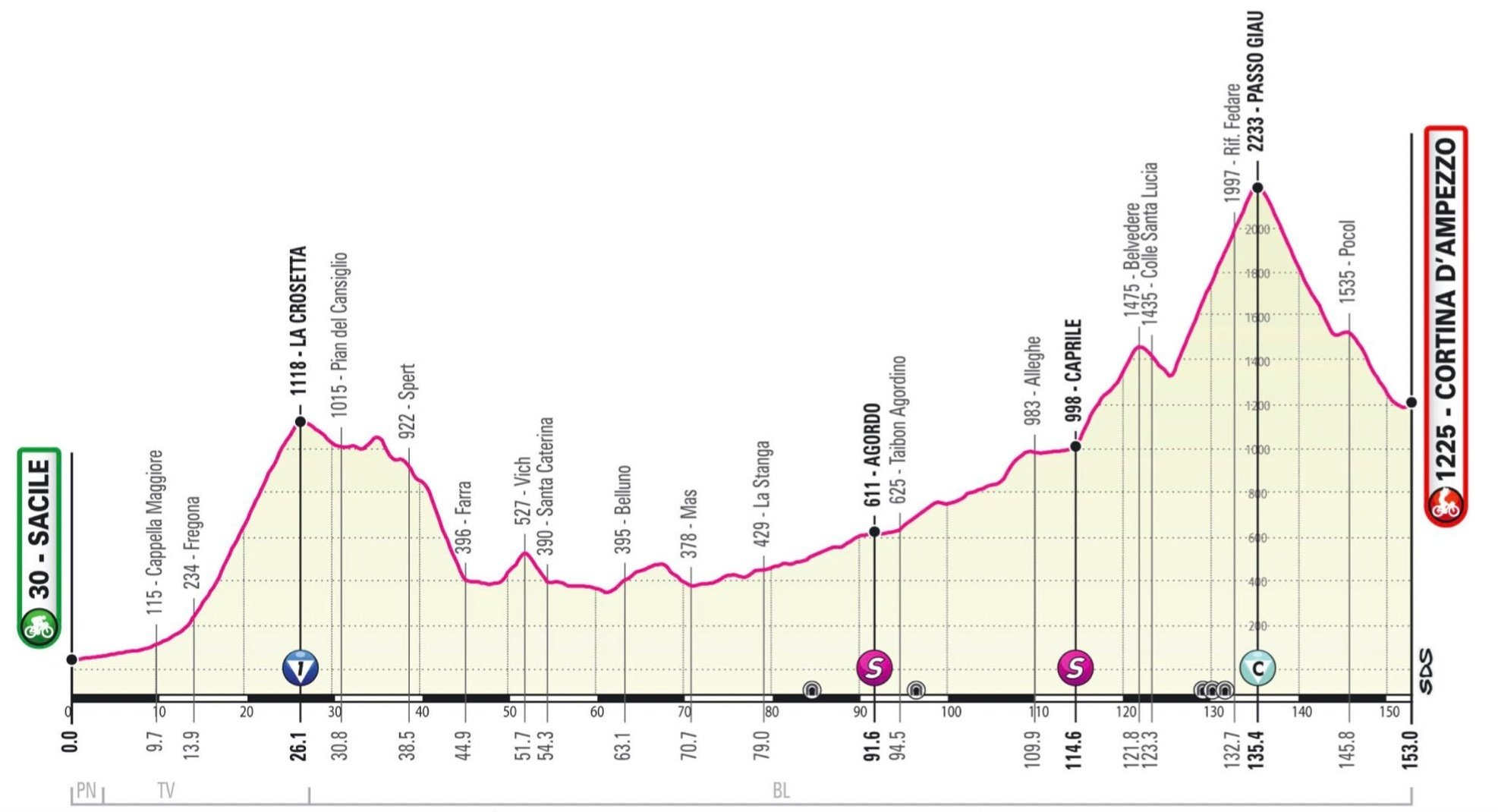

Ladies and gentelemen.
After 10 long years.
Fedaia is here
FEDAIAAAAAA!!!!!!!
Stage 16: Sacile – Cortina d’Ampezzo 212 km
Monday, May 24th, 10.50 CEST
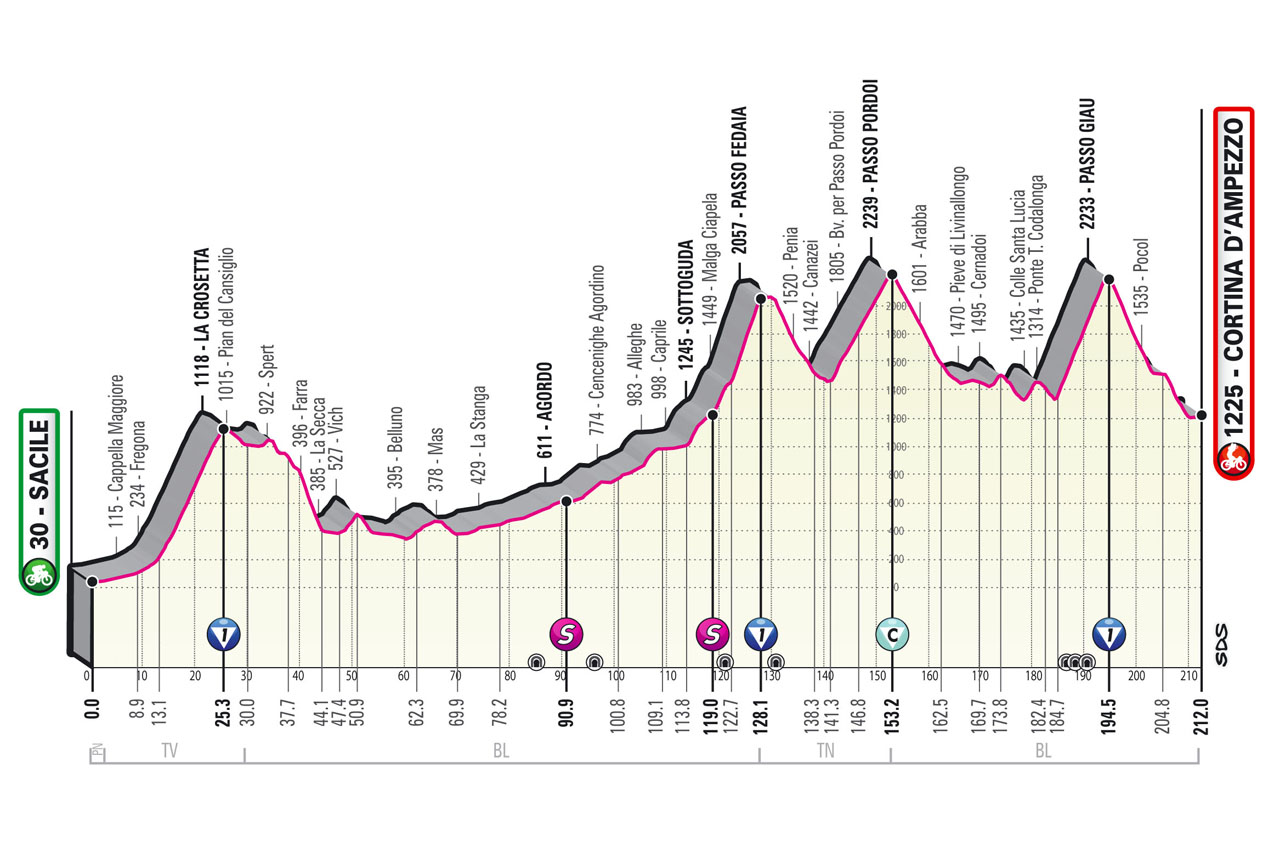

Technical Overview:
The queen stage of this Giro comes on a Monday, rather unusually. A long and proper dolomitic stage going over classic climbs, as it was missing since 2016. Starting from Sacile, the riders will encounter the first climb of the day after only 10 km. La Crosetta (GPM1, 11.6 km at 7.1%) is a tough climb, quite long but steady. It should be perfect to see a hard battle to get into the breakaway. At the top the riders will find a plateau of 8 km, before a very fast descent, on a wide road and with very few technical sections, will bring them back to the Piave valley. Here they will head north-west, deep into the Dolomites but for now only following the Cordevole valley for about 70 km, all slightly ascending. Along this valley they will hit the first intermediate sprint in Agordo, at km 91, after which they will keep heading north to reach the foot of the Marmolada massif, in Caprile, at km 114. Here starts one of the most famous climbs in Italy, due to both its toughness and its beauty, well before it became a meme on this forum: the mythical Passo Fedaia (GPM1, 14 km at 7.6%). It is a climb that can be divided into three sections. The first section is the easiest, with very irregular slopes mixed with false flats. Here the peloton will find the second intermediate sprint in Rocca Pietore, and on this section the peloton would usually use a small old road that goes through the gorge of Sottoguda, probably the prettiest place cycling has ever visited. Sadly, the road was wrecked by a flood a few years ago, and the road has not been fully repaired yet, which means the peloton will ride above the gorge, on the modern road. Profile-wise it barely makes any difference, but scenery-wise it cannot even be compared. The second section of the climb starts at 5.5km from the top and is just as iconic as the gorge: the road turns right and becomes a crazy steep straight, 2.5 km long at almost 12%. Well ok, it is not totally straight, there are a few half-bends in the middle, but mostly straight. Finally, the last section is made of 3 km of hairpins, always just over 10%. At the top there is a 2.5 km plateau along a lake, and then a short but pretty technical descent that brings to the town of Canazei, directly at the beginning of the Cima Coppi of this edition. Passo Pordoi (Cima Coppi, 11.8 km at 6.8%) is not a particularly glamorous or hard climb, but even so is a very classic and famous one. It holds the record for being Cima Coppi more times than any other climb: this will be the 14th time. However, it is interesting to note that it has not been Cima Copy since 2002, almost 20 years ago. The climb itself is very regular, without any hard ramps, and still very pretty to look at, just not as much as Fedaia. The descent is very technical and might be an important point of the race. Unfortunately it leads to an irregular stretch 11.5 km long, including a 1 km ramp at 7% and a subsequent descent that bring to the uncategorized Colle S.Lucia (2 km at 7.2%). Here, a 3.5 km descent will bring the riders to the last and decisive climb of the day, the famous Passo Giau (GPM1, 9.9 km at 9.3%). It is a very constant climb, with gradients always around 9% all the time. The top of Giau is at 16.5 km to the finish, and its descent, fairly technical, is 14.5 km long. The last 2 km go into the town of Cortina d’Ampezzo, which will host the winter Olympics in 2026. They are mostly flat, but the road does pick up the gradient at the end, with the home stretch being at about 5%.
Final Kilometers
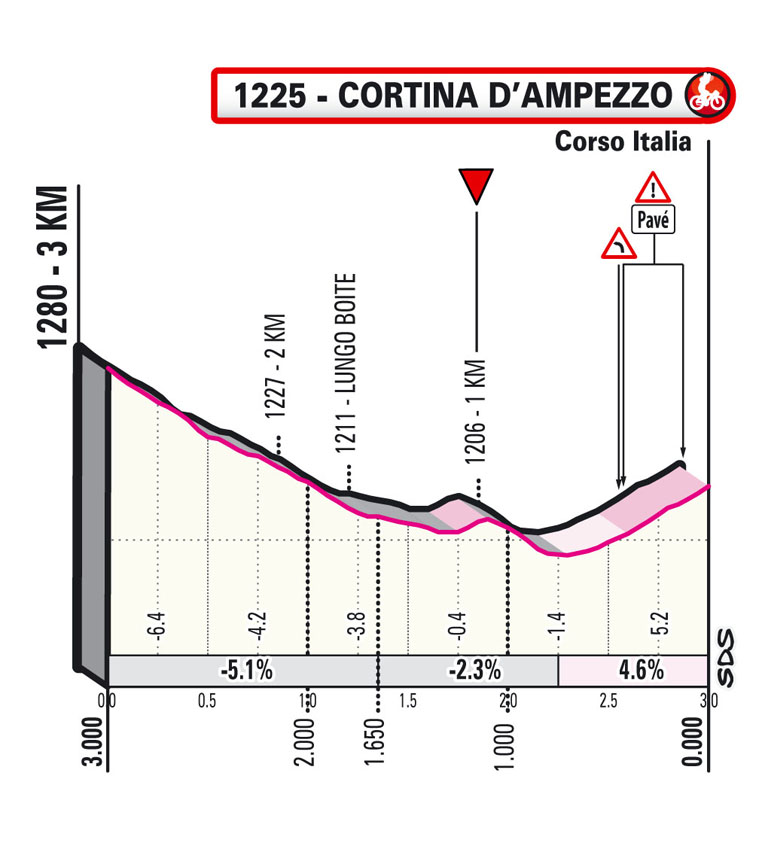
The Climbs:
La Crosetta: GPM1, 11.6 km at 7.1%
A solid climb without particularly hard gradients. The plateau at the top, known as Cansiglio, has been rumoured since years to be involved in a stage, and finally the locals have gotten one.
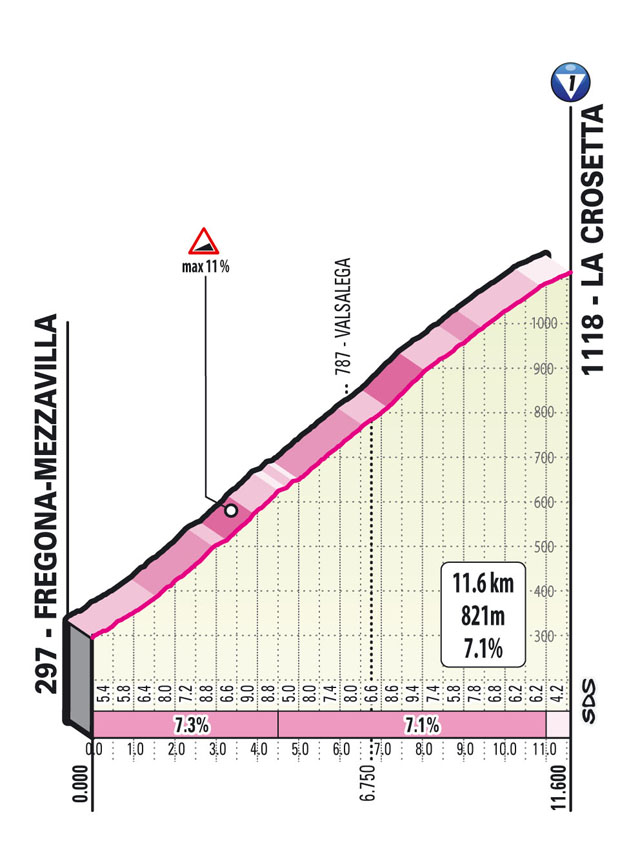
Passo Fedaia: GPM1, 14 km at 7.6%
It has been 1000 years… well, 10, but still too many. It is since the stage to Gardeccia 2011 that Fedaia (also known as Marmolada) has not been featured in the Giro. Meanwhile, the Canyon of Sottoguda has been wrecked by a flood, and who knows when it will be ready again to host a race. Canyon or not, this climb has almost always seen some great action in the past. This year it will be unlikely, but we can still hope. This will be the 15th time the Giro passes here, the first time being in 1975.
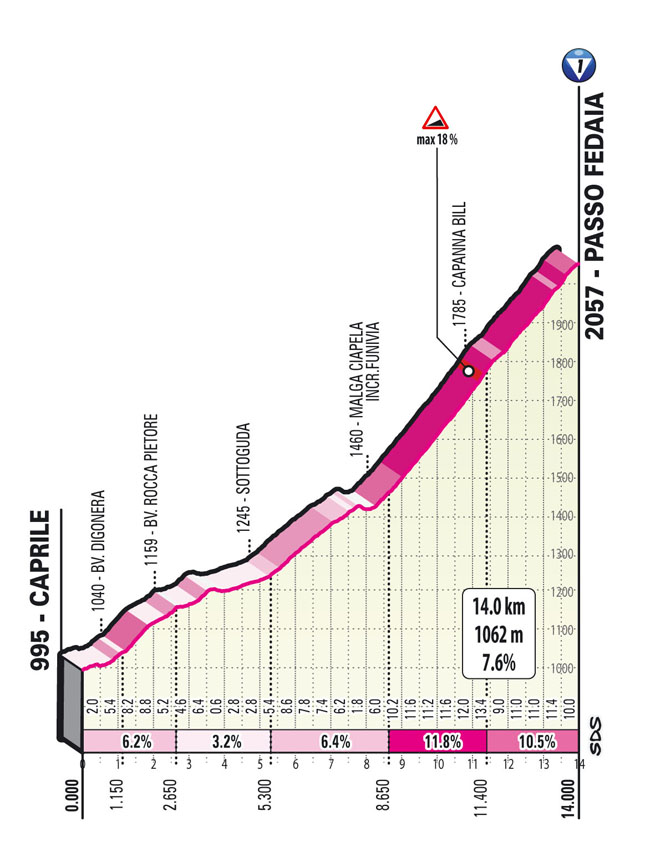
Passo Pordoi: Cima Coppi, 11.8 km at 6.8%
The most frequent Cima Coppi of all (13 times out of 35 total passages), by virtue of being the highest peak in an area very often traversed by the Giro. Besides the (not even that crazy) altitude, it is quite an unassuming climb, with steady gradients but with a stunning scenery at the top. It was featured in the Giro for the first time in 1940, with Gino Bartali himself going first over the top.
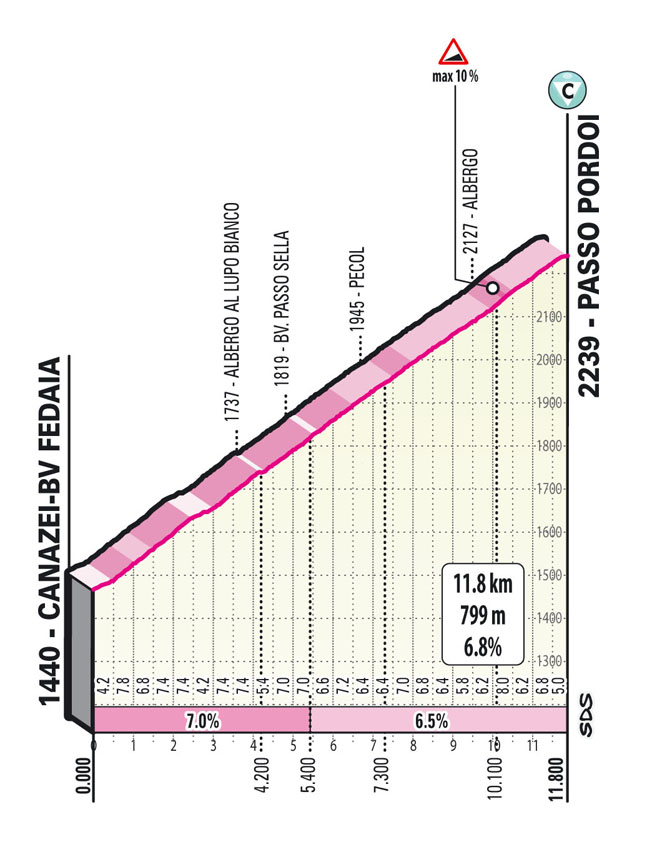
Passo Giau: GPM1, 9.9 km at 9.3%
Another mythical climb, with consistently high gradients all the way up. Missing in the Giro since 2016. It will only be the 9th time the Giro passes here. The first time was in 1973, with José Manuel Fuente reaching the top first.
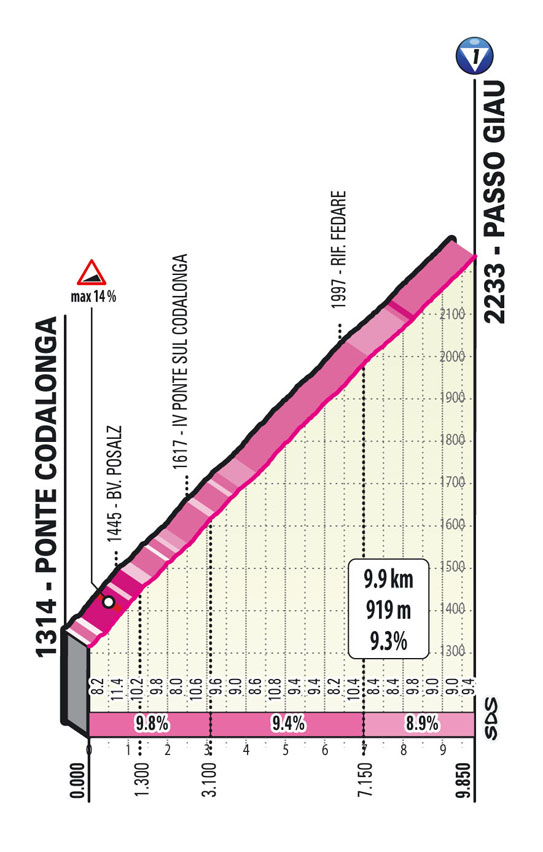
What to expect:
It is the queen stage, expectations will be high. The false flats between Pordoi and S.Lucia could be a problem though. Fedaia is way too far from the finish to see attacks from the big favourites, but maybe second-tier GC guys could light it up early. The breakaway composition will be extremely important, as domestiques might try to sneak into it and help possible early attacks by the captains on Fedaia or especially Pordoi. If nothing of the sort occurs, it will be just a war of attrition until the Giau, that will decide the stage. Either way I doubt this stage will be totally decisive for the GC, as there are still many mountains to come.
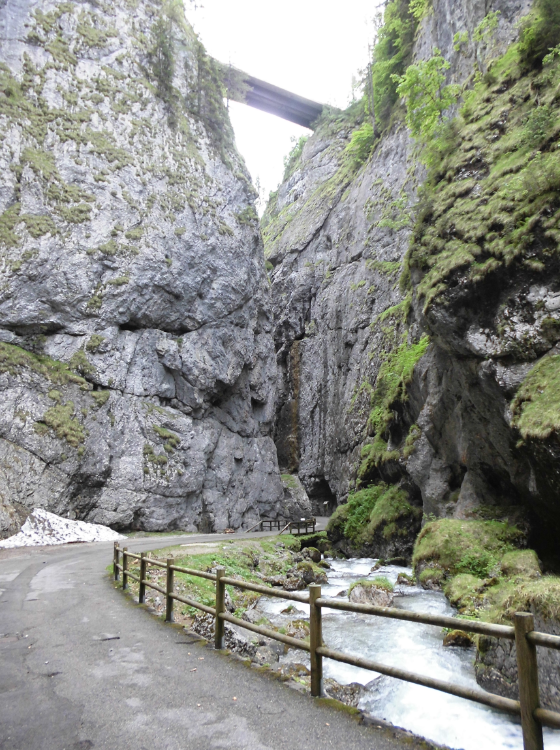
Serrai di Sottoguda, Passo Fedaia
Last edited:





